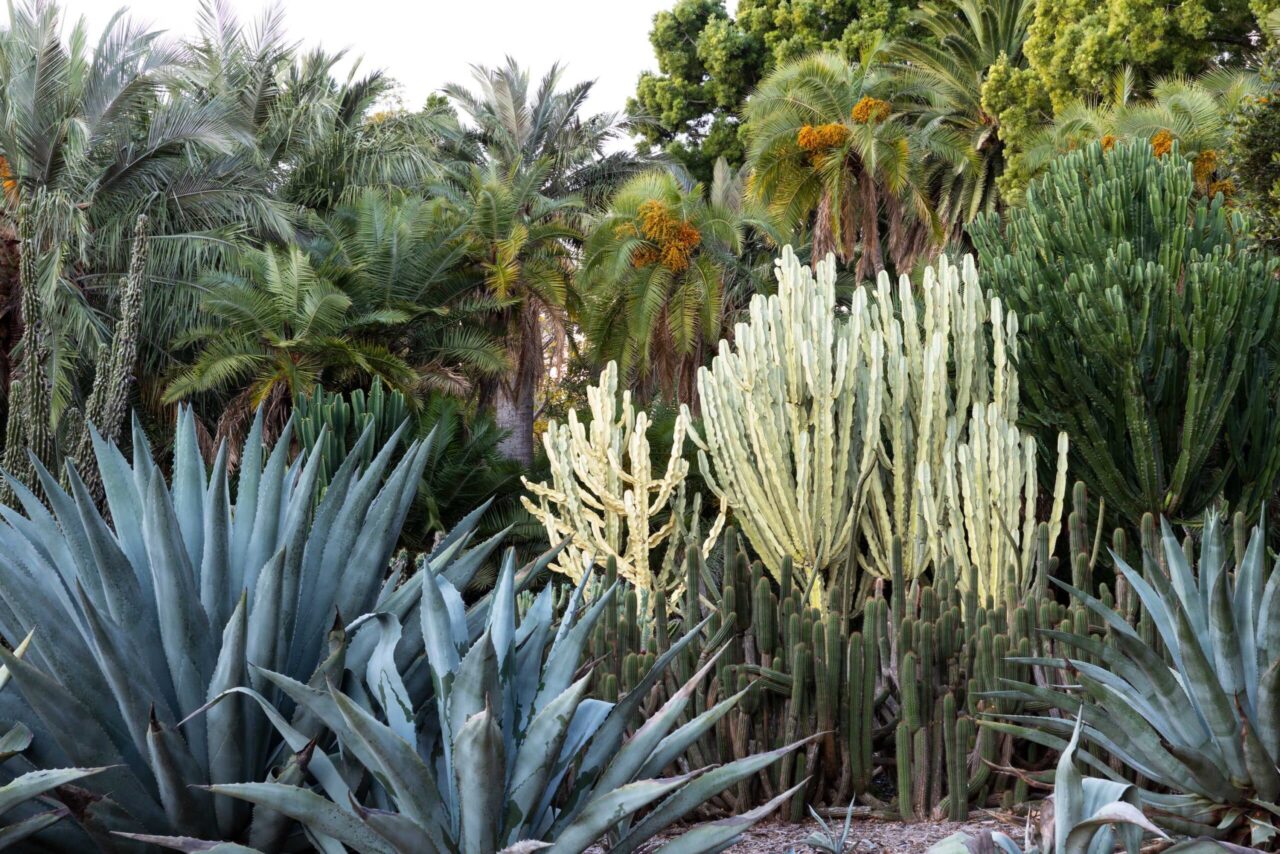Cacti & Euphorbias
These plantings reflect both Madame Ganna Walska's design style and her fascination with desert plants
Cacti & Euphorbias
After purchasing Lotusland in 1941, Madame Ganna Walska, with the help of respected Landscape Architect Lockwood de Forest, added cacti, succulents, and euphorbia plantings to beds in front of her new residence. These plantings reflect both Madame Walska’s design style and her fascination with desert plants. Initially hesitant to plant cactus in front of the house, de Forest later exclaimed, “You are wonderful! I never would have thought of using cactus at the front door, or many of the other plantings you suggested. They are very handsome and I congratulate you.”
the
Noteworthy
Features
Convergent Evolution
Looking down the Main Drive from the Main House, the left side is planted with cacti, which are New World plants from the Americas, and the right side is planted with Old World species of Euphorbia, mainly from Africa and Madagascar. Despite their comparable morphology, these two plant families are not related. The two groups on either side of the Main Drive are an example of convergent evolution, where distinct lineages independently evolve analogous traits due to occupying similar ecological niches. Many cacti and euphorbias converged upon the same adaptations, particularly development of spines, shallow root systems, and succulent stems for water storage.
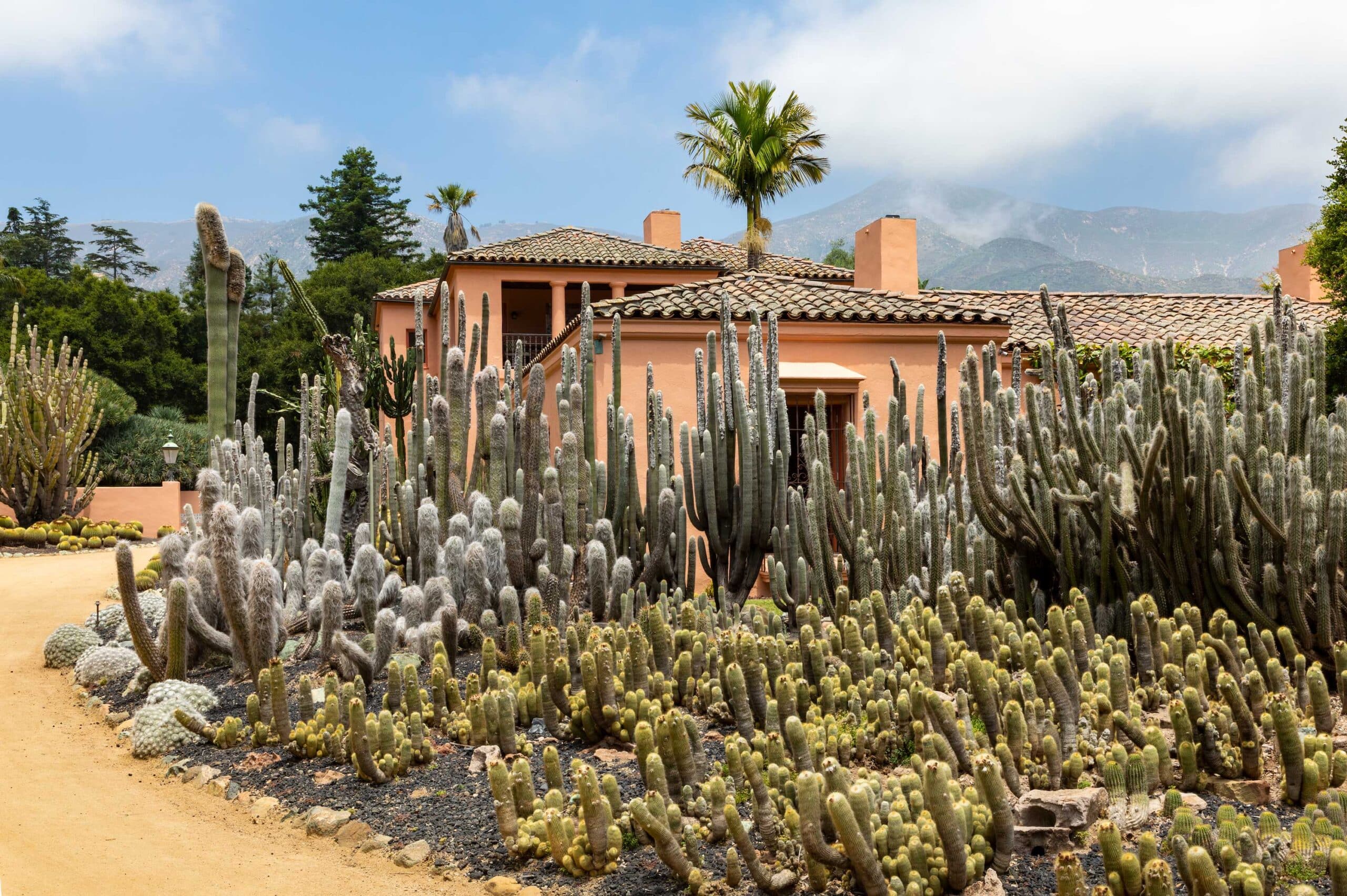
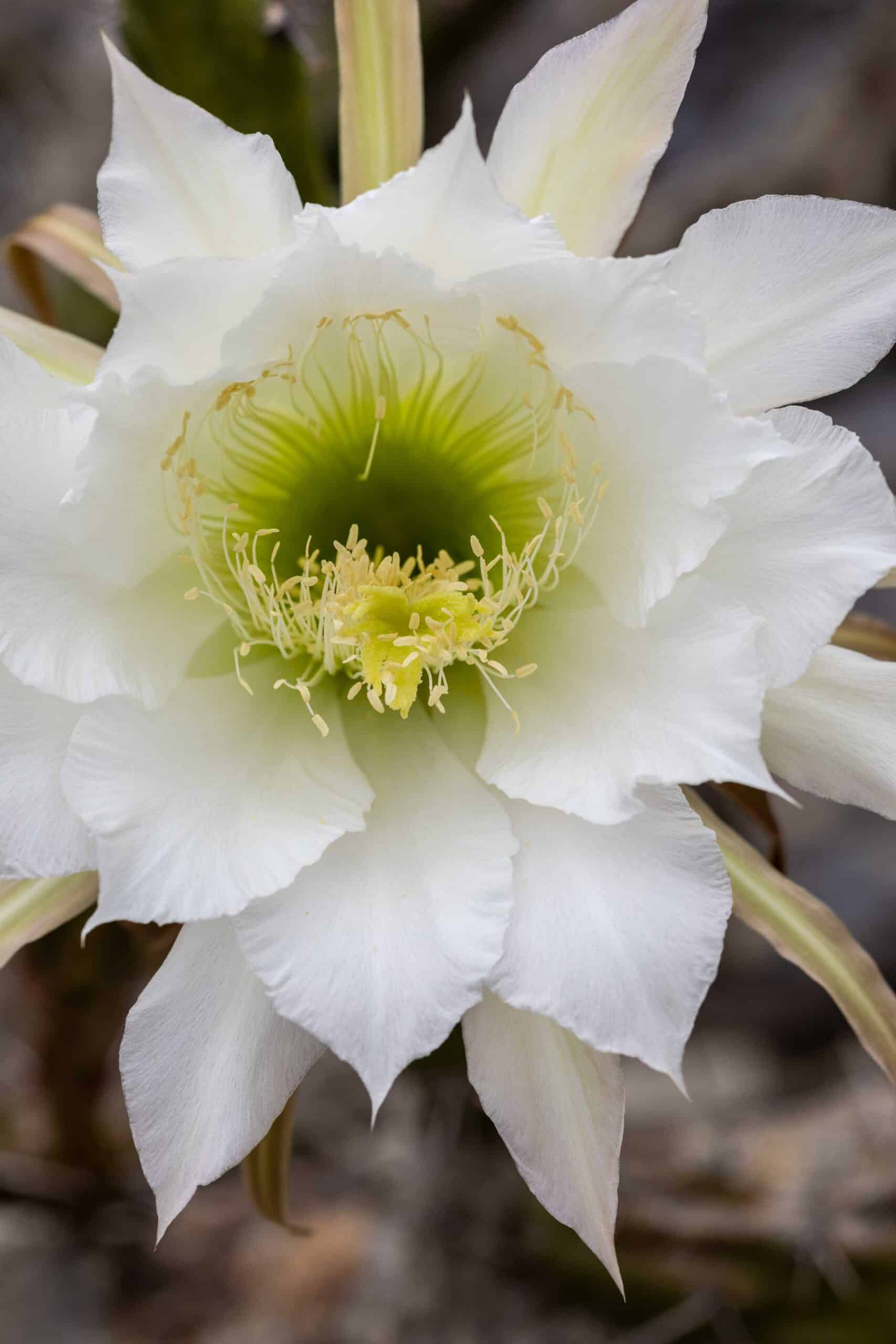
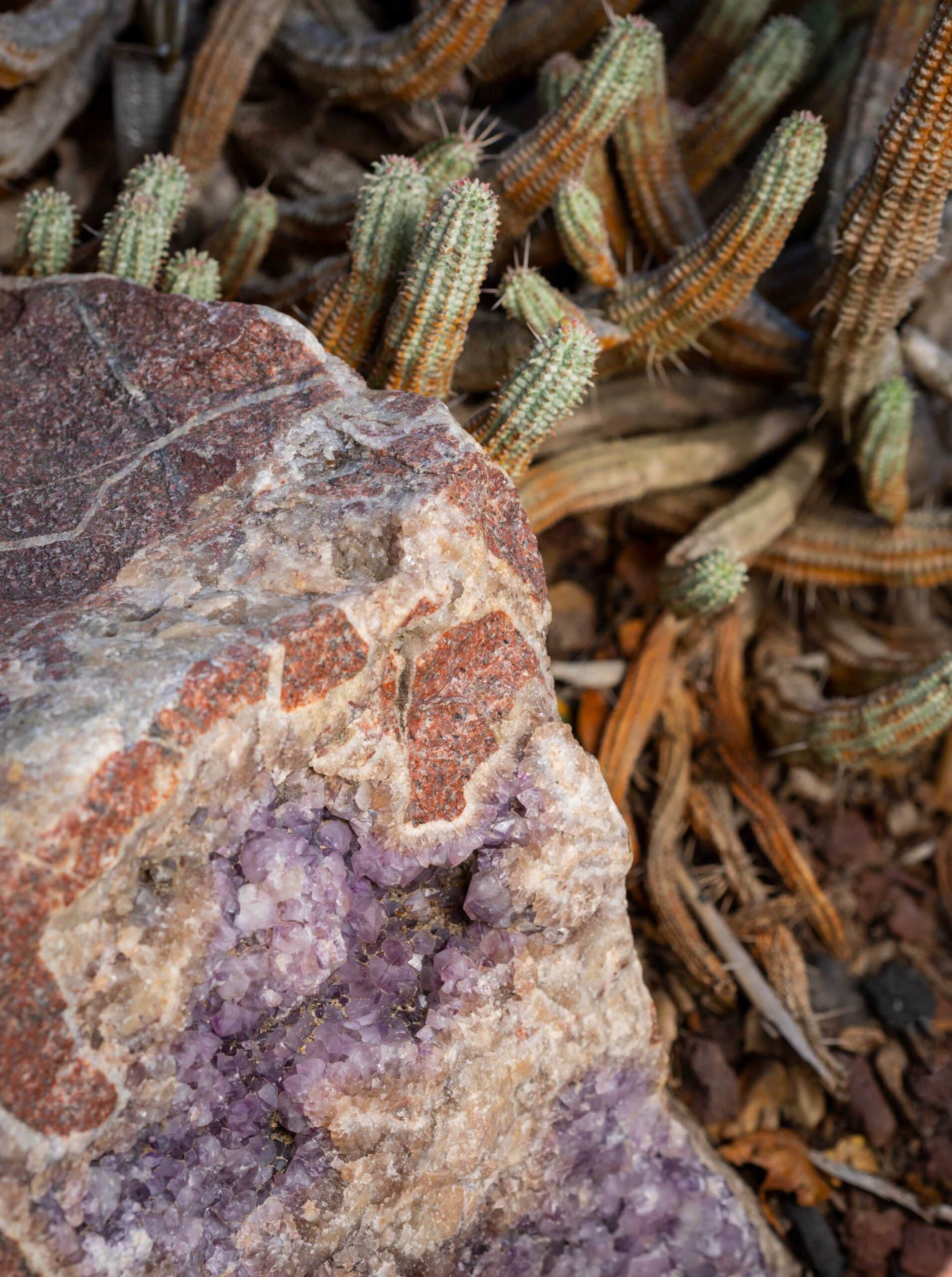
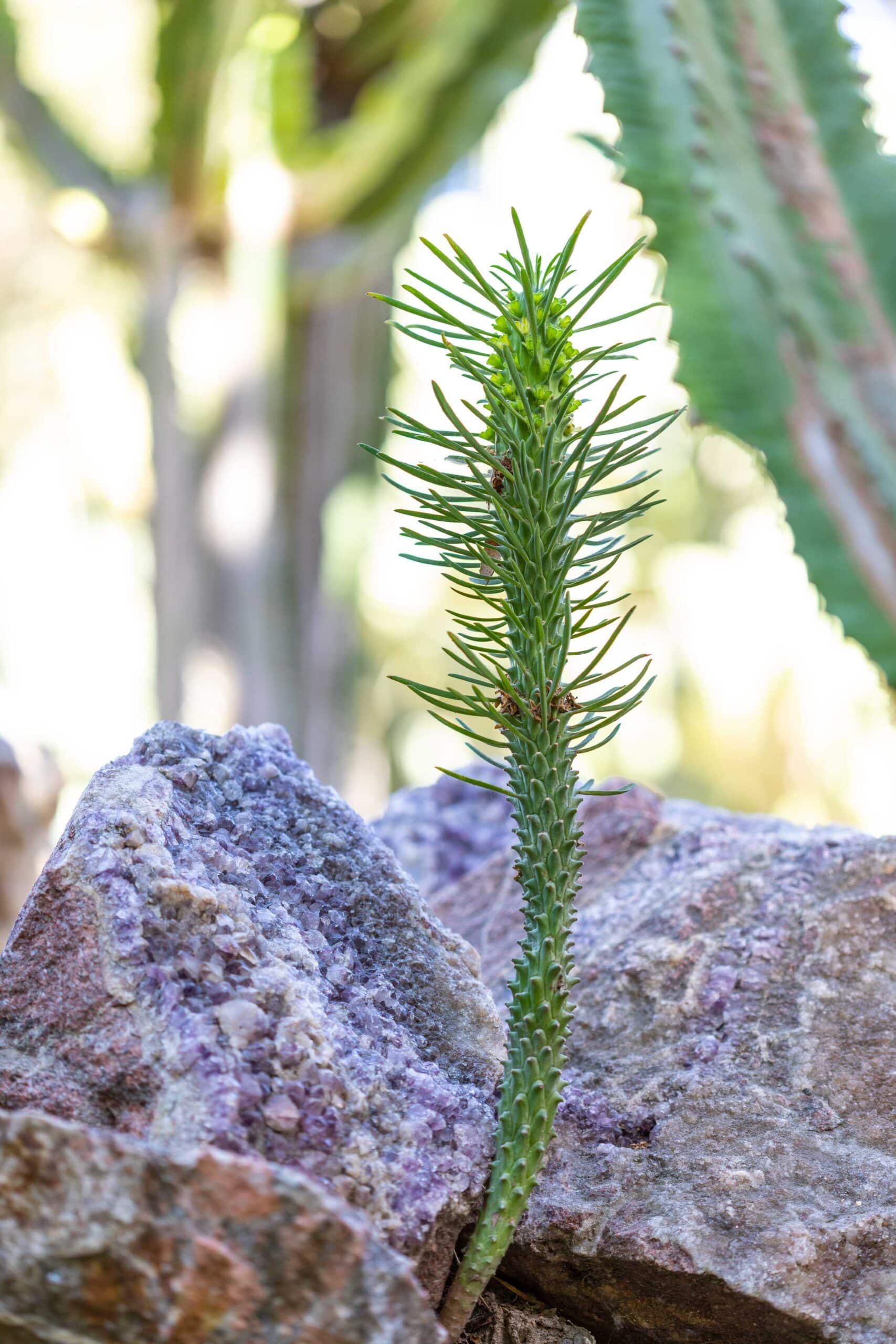
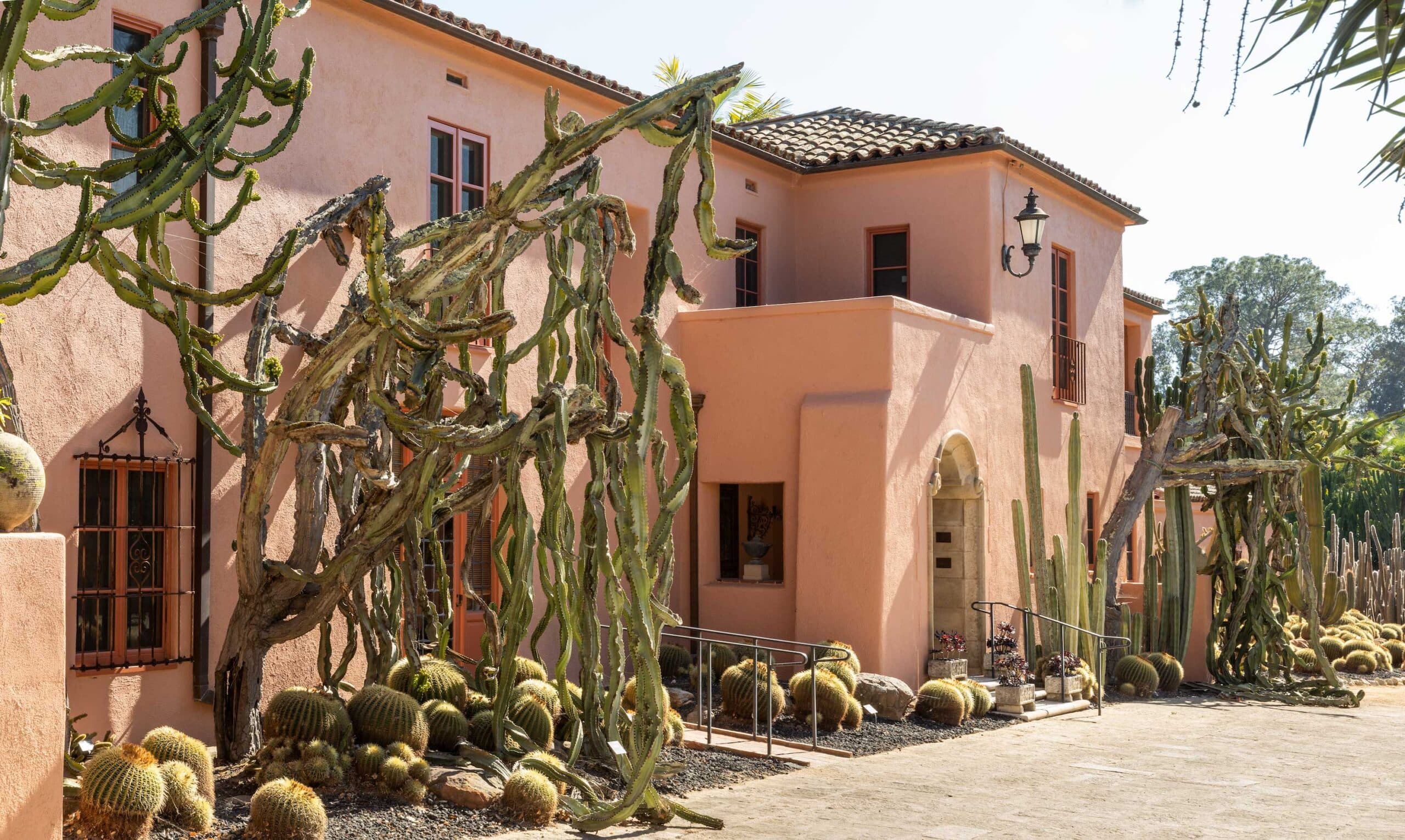
Euphorbia ingens
Lotusland has both the normal, upright form and the weeping form of E. ingens. The reason for the weeping form is unknown, but it is believed that a genetic variation leads to the distorted effect.
Golden Barrel Cactus
Golden barrel cactus (Echinocactus grusonii) take many years to bloom, sprouting small yellow flowers that are pollinated mostly by bees. These cacti were one of Madame Walska’s favorite plants and are an example of her style of mass plantings.
Learn MoreDID YOU KNOW?
Plants in the genus Euphorbia have a milky, latex sap that is quite toxic and can be very irritating to the skin.
Commercial rubber comes from the latex sap of a tree in the Euphorbia family, Hevea brasiliensis.
